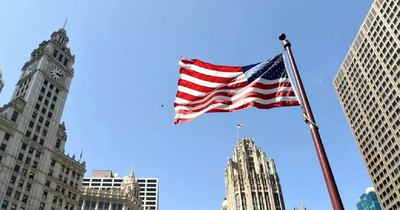
A silent crisis is unfolding across the American labor market. Office chairs remain unoccupied, factories struggle to meet demand, and farms face mounting shortages, not because jobs have vanished, but because the people to do them are no longer arriving.This isn’t a post-pandemic anomaly or a temporary workforce reshuffle. It’s the consequence of deliberate political choices. President Donald Trump’s intensified immigration crackdown is leaving gaping holes in the US workforce, and setting the stage for an economic paradox: Rising vacancies amid falling job growth.
From raids to revocations: The policy wall tightens
Legal status has been stripped from hundreds of thousands of immigrants. Workplace raids in cities like Los Angeles have become high-profile symbols of a zero-tolerance approach.
The southern border has been fortified with renewed urgency. Deportation targets have soared, with threats to remove as many as one million undocumented workers annually.The fallout is already visible. Analysts predict the immigrant population may not just grow more slowly in 2025, but it could shrink outright. That drop in labour supply spells trouble for sectors heavily dependent on immigrant workers, from agriculture and healthcare to logistics and hospitality.
The ripple effect? Disrupted supply chains, wage surges, and possible price inflation.
The Fed’s foggy dashboard: What’s real, what’s receding?
Normally, slowing job growth prompts the Federal Reserve to lower interest rates. It's a textbook response aimed at stimulating demand. But this time, the Fed faces a riddle: Is the job market cooling because businesses need fewer workers, or because immigration policy has simply choked off the supply?That distinction is no small matter.
If the Fed misreads the tea leaves and cuts rates prematurely, it could trigger unnecessary inflation. But standing still in the face of genuine economic decline risks recession. With data increasingly murky, every move carries risk.
The vanishing metric: Why job growth no longer tells the full story
Economists once relied on a "break-even" hiring rate, the number of jobs needed each month to maintain labor market stability. That benchmark, previously around 100,000 jobs per month, ballooned to 200,000 during Biden’s high-immigration years.
Now, under Trump, it's plummeting. Some estimates suggest it could fall below 50,000, or even as low as 10,000.So, when the next payroll report lands showing 110,000 jobs added, no one will agree on what it means. Growth? Stagnation? A red flag? A nothingburger? The metrics are losing meaning, and with them, the clarity that central banks depend on.“It’s just really hard to take payroll growth as a reliable signal of the health of the economy anymore,” says Ernie Tedeschi, director of economics at Yale Budget Lab.
Too few hands, too many consequences
A labour shortage driven by immigration restrictions doesn’t just strain businesses, it warps wage trends and fuels inflation. Employers forced to compete for a shrinking pool of workers will offer more to hire and retain talent, a pressure that eventually pushes up prices. This form of cost-push inflation could mimic the effects of an overheating economy, when in fact the system is starved, not sprinting.Even the unemployment rate, long regarded as a clearer measure, isn’t immune.
It depends on a separate, smaller household survey and can swing sharply from month to month. Wage growth numbers arrive quarterly. Other markers, like quit rates and job openings, often contradict each other.What remains is confusion, not just in the markets, but in the institutions tasked with steering them.
Fed vs. Trump: A war of optics and outcomes
Chair Jerome Powell has been caught in the political crosshairs. Trump recently sent him a handwritten note accusing the Fed of “costing the country a fortune” by keeping rates high.While many Fed officials prefer a cautious, wait-and-see approach, some Trump appointees are pressing for immediate cuts. The risk of misjudging the labour landscape, cutting too soon or too late, has never been higher. Worse still, mixed messaging could erode public trust in the Fed’s credibility, just as it struggles to contain post-pandemic inflation.
Immigration: From political weapon to economic lifeline
What’s missing from most economic models is the human element: The bus drivers, the field workers, the nurses and engineers, many of whom are immigrants, who keep the US economy functioning.
Trump’s immigration policies may score political points, but they also threaten to starve the labour market of the very people it relies on.The alarm bells are ringing. But will the Fed hear a slowdown, or a silence?
The American economy is at a crossroads
Empty desks and tighter borders may seem unrelated. But they are two sides of the same coin. One represents the growing labor vacuum in sectors crying out for talent. The other reflects a policy framework that is systematically closing the door on those who could fill it.The United States faces a hard truth: Sustaining growth in a modern economy requires openness, not just of markets, but of minds and borders.
Letting inflation spiral again would be disastrous. But so would mistaking an immigration squeeze for an economic slump. As Fed policymakers squint at conflicting data and brace for the next jobs report, one reality remains unavoidable: A shrinking labour force, if left unaddressed, will cost more than a rate hike ever could.

 8 hours ago
31
8 hours ago
31




























 English (US)
English (US)